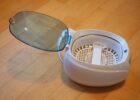
Regular preventive maintenance is the easiest and safest way of keeping your car in top form and saving money on future repairs. A well-maintained car will never leave you on the roadside waiting for a tow service. However, there is a bit of disagreement on what preventive maintenance is and when you should do it. We singled out a few repairs that everyone can do quickly and easily. If you want advice on how to look after your car, visit StartUpUrban.
The air filter
This is a simple task that doesn’t require any tools. Basically, you need a new air filter every 12 months. Between paying your mechanic to do it and giving up the car for a day and replacing it yourself, what would you choose? The filter is housed in a black metal box under the car hood. Disengage the side clips and check out how the filter fits inside. Remove the old one and put the new filter inside. You can even extend the life of your existing filter by blowing some compressed air to clean out any debris.
Spark plugs
You’ll need a ratchet or socket wrench, a 12” socket extension and a spark plug socket. Your owner’s manual will tell you the replacement period for your car make, but it’s usually after 30,000 miles. You’ll quickly spot the spark plugs as they are attached to thick rubber cables. Depending on how many cylinders your car has, you’ll have four, six or eight plugs. Remove the wire to the first spark plug only. Do not remove all the wires at once. It’s important to follow the order in which they were installed. Remove the first spark plug using the socket and ratchet extension. Screw in the new spark plug first by hand and then tighten it, but not too tight, and reattach the wire. Repeat the steps for each spark plug, one at a time.
Battery maintenance

This is among the cheapest maintenance tasks as you’ll only need corrosion-removal fluid, a wire brush and a wrench. Battery terminals can accumulate crunchy white residue which reduces its power and prevents your car from starting. Remove the battery terminals, making sure you always remove the negative cable first. Use a flathead screwdriver if they are stuck. Use a corrosion-removal fluid from your local auto parts store, or simply use a baking soda and water mix to make your own cleaner. Apply the fluid to the posts and clean with your wire brush. Dry the posts with a rag and replace the terminals.
Radiator coolant
With normal operation, topping up the radiator builds up deposits that can disrupt your cooling system. By flushing the radiator yourself, you can keep your system in shape and save yourself a trip to the mechanic. Your owner’s manual will tell you whether to do it yearly or every two years. Before you start, make sure your car is completely cool. Locate the radiator drain plug and after you put the used coolant receptacle in place, unscrew the drain plug. After you drain the old coolant, replace the cap, add radiator cleaning solution and fill put the rest with water. Start your car and let it run with the heater at max for 10 minutes and then wait for the engine to cool completely. Drain the radiator contents and refill with fresh coolant.
Oil replacement

Although many experts say that you need to change your oil every 3,000 miles, newer products and cars operate more efficiently, so after 5,000 miles is probably more realistic. After your engine has cooled completely, get under your car and locate the oil pan. Unscrew the drain plug and let the old oil drain into a container. Replace the drain plug and remove the old filter under the hood using an oil filter wrench. Lubricate the rubber gaskets on the new filter and fill the filter up to two thirds with new oil. After you hand-tighten the new filter in place, use a funnel to fill the engine with new oil and use a dip-stick to check if you’ve poured enough. Changing the oil is the dirtiest of all the jobs in this list, but also the most rewarding. Motor oil loses its lubricating properties over time, and unless replaced, may cause damage to cylinder heads, and that is a repair you won’t be able to perform yourself.
These simple maintenance jobs can save you thousands of dollars over the life time of your vehicle. Still, remember, one of the biggest secrets of DIY maintenance is knowing when not to do it yourself. Whatever you do, make sure it’s within your experience level.




